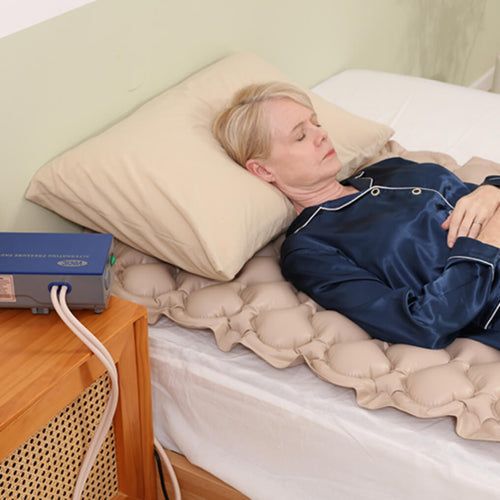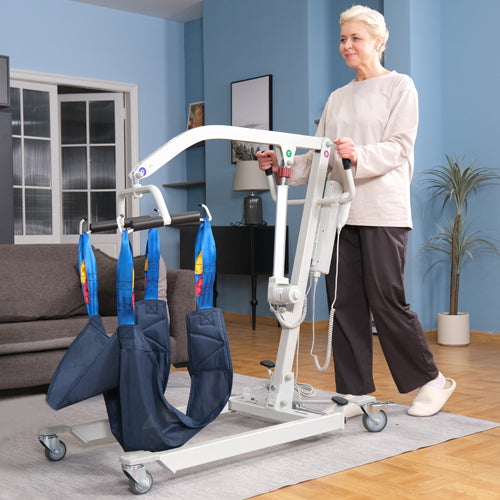Are you unable to move due to a faulty walker brake? This is a problem that most people who use mobility aids fear running into, and this blog post will guide you through solving it on your own.
Walker brakes are key components to ensure stability and safety during use of walkers. When these brakes fail, there may be some potential dangers. Let's dive into key troubleshooting tips and give you step-by-step instructions on how to troubleshoot and repair your walker brake.
Understanding Walker Brakes

1. Types of Walker Brakes
-
Standard Loop Brakes: These brakes are commonly found on basic walkers. By squeezing the loop brake handle, the user can engage the brakes, providing stability when needed.
-
Push-Down Brakes: Typically seen on wheeled walkers, these brakes are activated by pushing down on the handles. This type offers a simpler way to engage the brakes compared to loop brakes.
-
Locking Brakes: Often featured on rollator walkers, locking brakes provide the option to keep the walker stationary without the need to constantly grip the handles. Users can engage and disengage the brakes by pushing or pulling a lever.
2. Importance of Well-Functioning Brakes
-
Safety: Well-functioning brakes are essential for the safety of the individual using the walker. They provide stability and prevent the walker from rolling away unexpectedly, especially on uneven surfaces or inclines.
-
Control: Properly working brakes give the user better control over their movements, allowing them to stop the walker securely when needed and proceed with confidence.
-
Prevention of Falls: Functional brakes help prevent falls by ensuring that the walker stays in place when the user is transferring in and out of the walker or when stationary.
-
Peace of Mind: Knowing that the brakes are working effectively can offer peace of mind to both the user and their caregivers, reducing anxiety about potential accidents or mishaps.
Diagnosing Brake Issues
1. Common Signs of Brake Problems
-
Squeaking or Squealing: If you hear high-pitched noises when applying the brakes, it could indicate worn-out brake pads.
-
Vibrations: Experiencing vibrations or pulsating sensations while braking might suggest rotor issues.
-
Pulling to One Side: If the walker veers to one side when you apply the brakes, there could be a brake fluid or caliper problem.
-
Soft Brake Pedal: A spongy or soft brake pedal could mean air in the brake lines or a brake fluid leak.
-
Burning Smell: A burning odor when braking could indicate overheated brake pads or a mechanical issue.
2. Tools Needed for Diagnosis
-
Jack and Jack Stands: These are essential for safely lifting the walker off the ground to inspect the brakes.
-
Flashlight: A flashlight will help you get a clear view of the brake components and identify any potential issues.
-
Socket Set and Wrenches: These tools are necessary for removing the wheels and accessing the brake components.
-
C-Clamp or Brake Tool: Useful for compressing the brake calipers when replacing brake pads.
-
Brake Cleaner: Helps in cleaning brake components for a better inspection.
Fixing Walker Brakes

1. Step-by-Step Brake Repair Guide
-
Assessment: Start by inspecting the current condition of the walker brakes. Look for any signs of wear and tear, such as worn-out brake pads or loose cables.
-
Adjustment: If the brakes are not engaging properly, you may need to adjust them. Locate the adjustment knob or screw on the brake mechanism and tighten or loosen it according to the manufacturer's instructions.
-
Replacement: In case the brakes are beyond repair, it's time to replace them. Begin by removing the old brake pads and cables carefully. Install the new brakes following the manufacturer's guidelines.
-
Testing: After making adjustments or replacements, test the brakes to ensure they are working correctly. Push the walker forward and apply the brakes to see if they stop the walker smoothly.
2. Safety Measures During Brake Fixing
-
Secure Workspace: Choose a well-lit and clutter-free area to work on your walker. Ensure there are no tripping hazards around you.
-
Use Protective Gear: Wear gloves to protect your hands from sharp edges and ensure your safety goggles are on to prevent any debris from entering your eyes.
-
Stability: Make sure the walker is stable during the repair process. Lock the wheels or have someone hold the walker steady while you work on the brakes.
-
Follow Instructions: Always refer to the Walker's user manual for specific guidance on brake maintenance. Do not attempt repairs beyond your expertise.
Maintenance Tips to Prevent Future Issues

1. Regular Cleaning and Inspection
2. Proper Lubrication Techniques
3. When to Seek Professional Help
4. Testing the Repaired Brakes
5. Ensuring Proper Functionality
-
Visual Inspection: Start by visually inspecting the repaired brakes. Check for any loose parts, misalignment, or obvious signs of damage. Ensure all components are securely in place.
-
Operational Test: Next, conduct an operational test by engaging the brakes while applying pressure on the walker. Ensure the brakes engage smoothly without any sticking or delayed response.
-
Wheel Lock Test: Perform a wheel lock test by applying the brakes suddenly to check if the wheels lock up appropriately. This test helps determine if the brakes have sufficient stopping power.
-
Adjustment Check: If your walker brakes are adjustable, make sure to check and adjust them according to your preference. Test the brakes again after any adjustments to ensure they are properly set up.
-
Noise Check: During the testing phase, pay attention to any unusual noises coming from the brakes. Squeaking, grinding, or rattling sounds may indicate underlying issues that need to be addressed.
-
Smoothness Test: Finally, test the brakes for smoothness of operation. The brakes should engage and release seamlessly without any jerky movements or resistance.
Conclusion
Repairing a walker brake is a simple and practical task that anyone can complete with the right tools and expertise. Remember to check and maintain your rollator brakes regularly to prevent any potential accidents.
By following the step-by-step guide outlined in this blog post, feel free to use your walker knowing you should have the knowledge to fix it. If you have other questions about these transportation tools or choose to visit VOCIC's website for help.









